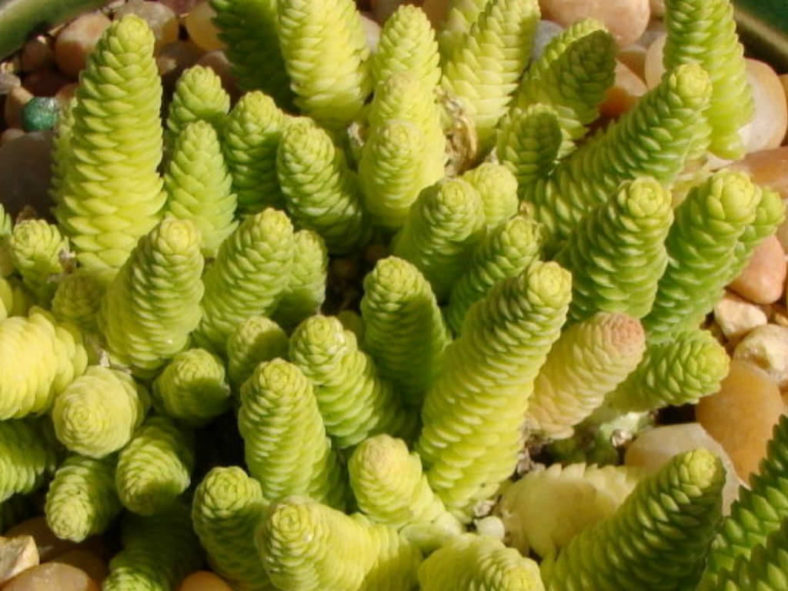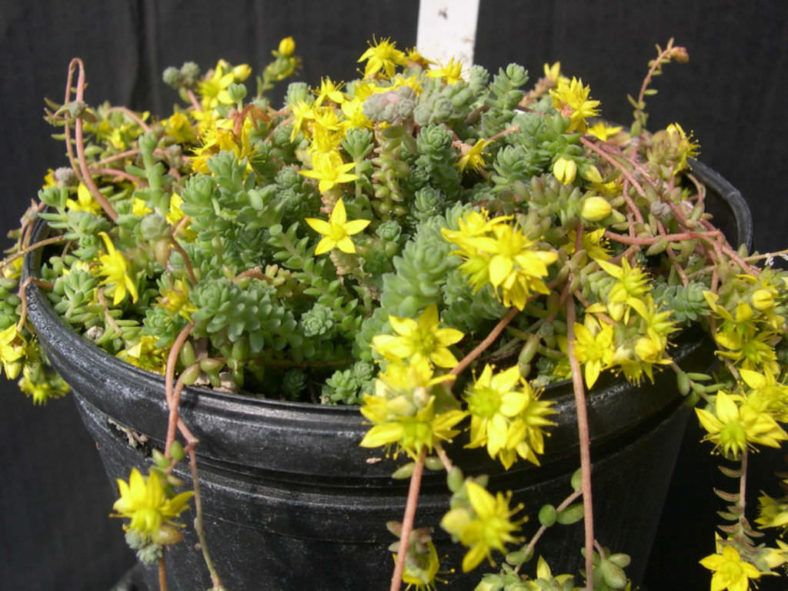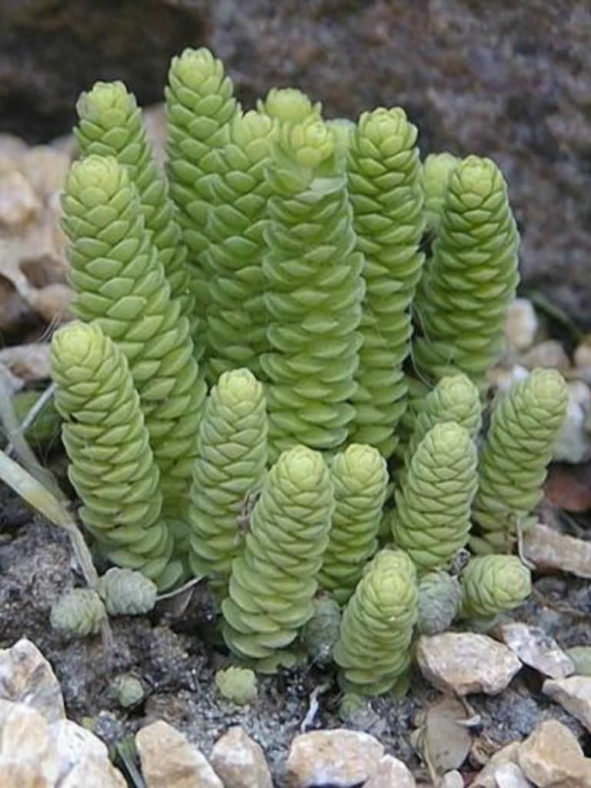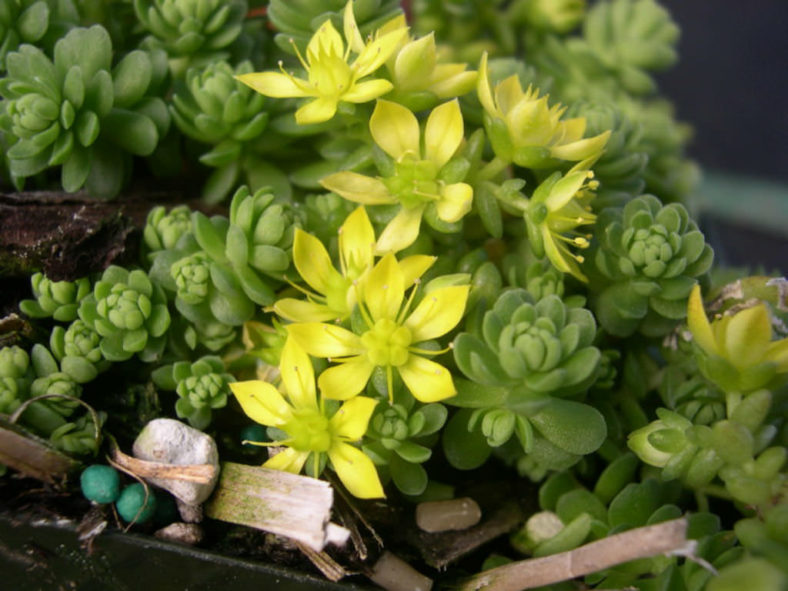Scientific Name
Sedum greggii Hemsl.
Synonym(s)
Sedum diversifolium, Sedum greggii subsp. angustifolium
Scientific Classification
Family: Crassulaceae
Subfamily: Sempervivoideae
Tribe: Sedeae
Genus: Sedum
Origin
Sedum greggii is native to Mexico.
Description
Sedum greggii is a small succulent that forms cone-shaped rosettes at the base of the flowering stems. The leaves are alternate oblanceolate or elliptic, rounded to obtuse, and measure up to 0.5 inches (1.3 cm) long and 0.2 inches (0.5 cm) wide.
The flowers are star-shaped with sulfur yellow petals, sometimes with red-speckled keel, and appear in summer on stalks that can reach up to 6 inches (15 cm) in height. After flowers are spent in midsummer, the tightly packed imbricate leaves form rosettes at the base of stems. These buds elongate the following winter. By spring, the stems are seen for the first time as simple terminal inflorescences of several flowers that rise above still relatively tightly packed elongated tufts.

Hardiness
USDA hardiness zones 10a to 11b: from 30 °F (−1.1 °C) to 50 °F (+10 °C).
How to Grow and Care
When growing Sedums, keep in mind that these plants need very little attention or care. They will thrive in conditions many other plants thrive in but do just as well in less hospitable areas. They are ideal for that part of your yard that gets too much sun or too little water to grow anything else. A common name for Sedum is Stonecrop because many gardeners joke that only stones need less care and live longer.
Sedum is easily planted. For shorter varieties, laying the plant on the ground where you want it to grow is usually enough to start it there. They will send out roots from wherever the stem touches the ground and root itself. If you want to ensure the plant starts there, add a very thin soil covering.
You can break off one of the stems for taller varieties and push it into the ground where you want to grow it. The stem will root very easily, and a new plant will be established in a season or two.
See more at How to Grow and Care for Sedum.
Hybrids
Links
- Back to genus Sedum
- Succupedia: Browse succulents by Scientific Name, Common Name, Genus, Family, USDA Hardiness Zone, Origin, or cacti by Genus
Photo Gallery
Click on a photo to see a larger version.



